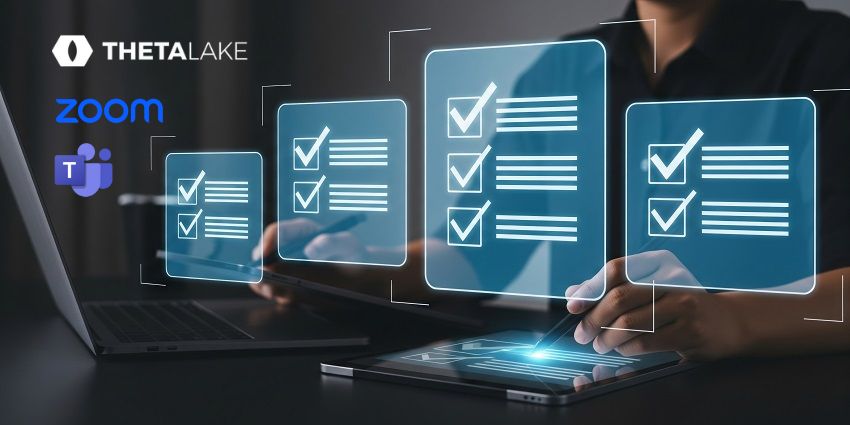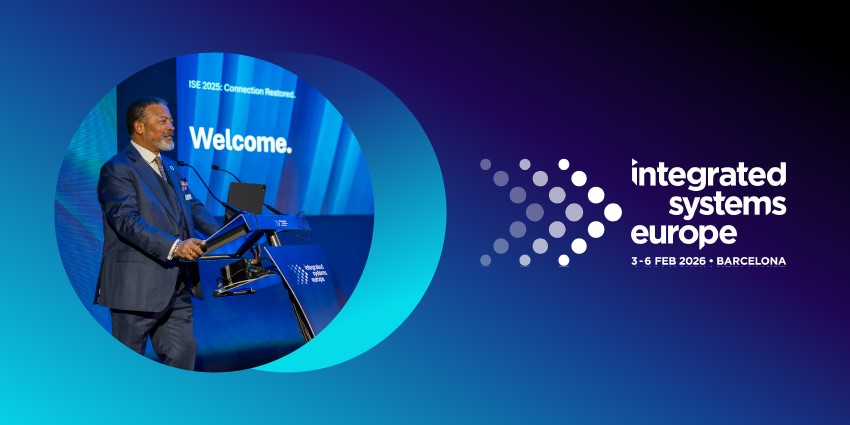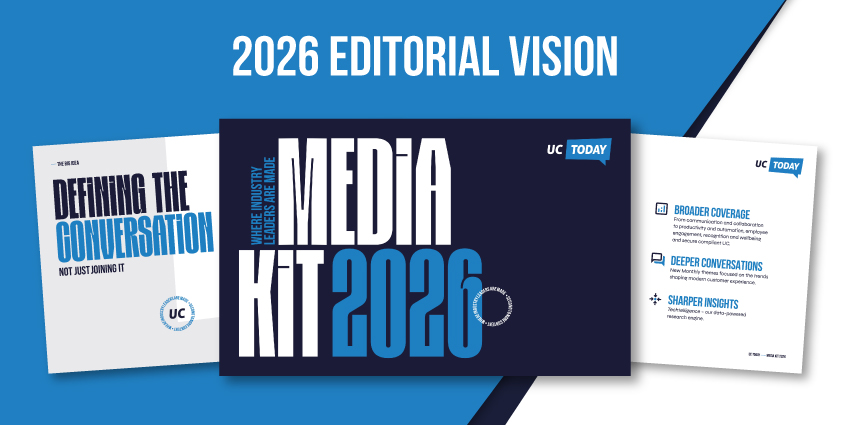As someone deeply passionate about how unified communications transforms workplace productivity, I’ve watched with fascination as enterprises embrace multi-platform strategies. If you’re an IT leader managing compliance across Microsoft Teams, Zoom, Cisco WebEx, RingCentral, and Slack simultaneously, this article addresses the challenge that keeps many of us awake at night: ensuring watertight governance when your digital conversations span multiple ecosystems and communication types, including AI generated content.
The reality is stark and undeniable. Organizations aren’t consolidating their UC platforms—they’re expanding them. Recent survey data from Theta Lake reveals that 50% of enterprises are using between four and six communication and collaboration tools, while nearly a third are juggling seven to nine platforms. Only 15% are operating with fewer than four tools.
This isn’t a temporary phase or a sign of poor IT strategy. It’s the new normal, driven by best-of-breed selection, new features being developed in the high stakes race between vendors, specialized use cases, and the increasingly sophisticated interoperability between platforms. But while this multi-platform approach can deliver enhanced productivity and user satisfaction, it creates compliance challenges that traditional governance solutions simply weren’t designed to handle.
Why Multi-Platform UC Is Here to Stay
The shift toward multiple UC platforms reflects how work itself has evolved. Different teams, regions, and use cases often require different collaboration approaches. Your sales team might prefer Zoom for customer-facing meetings due to its reliability and ease of use for external participants. Meanwhile, your internal teams might rely heavily on Microsoft Teams for its deep integration with Office 365 and SharePoint.
Add RingCentral for voice-heavy departments, Cisco Webex for secure government communications, and Slack for persistent team collaboration, and you quickly understand why enterprises maintain diverse UC portfolios. Each platform excels in specific scenarios, and forcing uniformity often means sacrificing productivity gains that justify the technology investment in the first place.
“Organizations are getting more specialized around best-of-breed options,” explains Garth Landers, Director of Global Product Marketing at Theta Lake.
“The meshing and interoperability of these tools is becoming more mature, which creates real challenges from a compliance standpoint.”
This specialization trend shows no signs of reversing. If anything, as platforms become more interoperable and APIs more sophisticated, enterprises will feel more comfortable adopting tools that excel in specific areas rather than settling for one-size-fits-all solutions.
The Compliance Gap: Where Multi-Platform Strategies Fail
Here’s where the productivity gains meet regulatory reality. A single digital conversation in today’s workplace might begin as a Slack message, evolve into a Zoom meeting, continue via Teams chat, and conclude with shared files in multiple repositories. There might even be AI summarizations of those conversations in some platforms as well. That conversation could span weeks, months, or even years as business relationships develop and projects evolve.
Traditional compliance solutions fail in this environment because they were designed for simpler times. Many archiving vendors emerged from email or voice-only backgrounds and struggle to adapt to the rich, multimedia nature of modern collaboration. They often keep data in silos and they might capture Teams messages but miss Zoom whiteboard annotations, or archive meeting recordings but lose the AI-generated summaries that often contain the most sensitive information.
“Legacy vendors typically come from email or voice-only perspectives and now they’re trying to do all those other things,” Landers notes. “There’s a real bifurcation in the market that doesn’t exist for Theta Lake. We were built for this.”
The result is compliance fragmentation—gaps where critical business communications, including recordings, or AI generated content including prompts and responses, exist outside your governance framework or live in different silos. In regulated industries, these gaps aren’t just inconvenient; they’re potentially catastrophic. A single missing interaction could derail an investigation, compromise a legal defense, or trigger regulatory penalties.
Real-World Impact: A Financial Services Case Study
Consider a large multinational financial services firm that recently recognized the limitations of their legacy compliance approach. Operating across the UK, EU, and US markets, they maintained both Microsoft Teams and Zoom to meet diverse client and internal needs. Their existing voice recording solution—perfectly adequate for traditional telephony—simply couldn’t handle the complexity of modern collaboration platforms.
“They tried, they spent a lot of time with a vendor they’d had for years, but it was just the wrong tool for the job,” Landers explains. “They were looking for a partner with a platform that could cover their current needs and their future state in terms of anything else they would adopt.”
The firm’s challenge illustrates a common progression in multi-platform compliance. The initial need was straightforward: capture and retain Teams and Zoom meeting transcripts. But the deeper requirement was for a governance framework that could evolve with their technology adoption, detect risks across platforms, and maintain consistent policy enforcement regardless of which collaboration tool employees chose for specific interactions.
This isn’t just about compliance checkbox exercises. For financial services firms, missing or inconsistent communication records can impact everything from regulatory examinations to litigation discovery. The ability to demonstrate comprehensive governance across all communication channels directly affects business risk and operational resilience.
Theta Lake’s Unified Approach: No Platform Left Behind
Effective multi-platform compliance requires three fundamental capabilities that traditional solutions struggle to deliver. First, you need direct API integration with each platform, ensuring that new features and updates don’t create compliance gaps. This addresses the need for data completeness. Theta Lake’s partnerships and investment relationships with vendors like Zoom, Cisco, Ringcentral and Salesforce enable them to stay current with platform evolution, supporting new functionality as it’s released rather than playing catch-up months later.
“Those platforms can be changing over the course of a quarter with 50-100 updates to their portfolio”
Landers explains. “We work directly with those vendors and keep pace so there are no compliance gaps when you install an update with new capability.”
Second, with unified content, you need unified policy management, search and visibility across platforms. Organizations shouldn’t have different approaches for identifying sensitive content in Zoom versus Teams versus Webex. This creates operational complexity, inconsistent enforcement, and gaps where violations might occur in one platform but not be detected due to different policy frameworks.
As part of your data unification efforts, you need flexible archiving that doesn’t lock you into vendor-specific storage solutions. The traditional approach of making “until death do you part” archive decisions creates long-term dependencies that become expensive and inflexible over time. Modern compliance platforms should support various storage options, such as allowing you to bring your own storage and encryption key, or use Theta Lake’s SEC 17a-4 compliant archive, while maintaining consistent retention and retrieval capabilities.
Beyond Capture: The Intelligence Layer
Modern multi-platform compliance extends far beyond simple capture and storage. AI-powered risk detection, automated policy enforcement, and intelligent content analysis are becoming essential capabilities as communication volumes scale exponentially across multiple platforms.
Consider the complexity of monitoring a conversation that begins in Slack, moves to a Zoom meeting with screen sharing and whiteboard collaboration, continues in Teams chat with file attachments, and concludes with follow-up emails. Each interaction might contain different types of sensitive information requiring platform-specific detection approaches, but the overall policy framework needs to remain consistent.
Theta Lake’s approach addresses this challenge through unified risk detection that works across textual, visual, and audio content regardless of platform origin. Whether someone shares sensitive financial data in a Teams chat, discusses it in a Zoom meeting, or seeks it out in Microsoft Copilot, the same policy framework applies consistent governance.
The Archive Evolution: Flexibility Over Lock-In
One of the most critical decisions in multi-platform compliance involves data storage and retention. Traditional archive solutions often create vendor lock-in situations where organizations invest heavily in proprietary storage systems that become expensive to maintain and nearly impossible to migrate away from.
Modern compliance platforms like Theta Lake take a different approach, offering flexibility in storage options while maintaining consistent governance capabilities. Whether you prefer AWS, Azure, and bring-your-own-key encryption, the compliance layer should remain constant while giving you choice in infrastructure decisions.
This flexibility becomes particularly important in multi-platform environments where different tools might have varying data residency requirements, retention periods, or security classifications. A unified compliance platform should accommodate these differences without forcing you into rigid storage architectures that may not align with your broader IT strategy.
Looking Forward: Preparing for Platform Evolution
The UC landscape will continue evolving rapidly, with new platforms emerging, existing solutions adding capabilities, and integration possibilities expanding. Organizations need compliance strategies that can adapt to this evolution without requiring fundamental architecture changes every time a new tool enters the environment.
This forward-thinking approach means selecting compliance partners who demonstrate platform agnosticism, API-first integration strategies, and the technical capability to evolve with the market. It also means building internal policies that focus on consistent governance principles rather than platform-specific rules that become outdated as your technology stack changes.
The most successful organizations view multi-platform compliance not as a necessary burden but as a strategic capability that enables confident innovation. When you know your governance framework can handle new collaboration tools and evolving workflows, you’re free to adopt technologies that enhance productivity without compromising regulatory obligations.
The Strategic Imperative: Unified Governance in a Fragmented World
Multi-platform UC strategies aren’t going away—they’re becoming more sophisticated and more essential to competitive advantage. Organizations that figure out how to maintain comprehensive compliance across diverse collaboration environments will be better positioned to innovate, attract talent, and serve customers effectively.
The key is recognizing that platform fragmentation doesn’t have to mean governance fragmentation. With the right compliance framework, you can maintain unified oversight across Microsoft Teams, Zoom, Cisco Webex, RingCentral, Slack, and whatever platforms emerge next.
For IT leaders and compliance professionals navigating this complexity, the message is clear: your governance strategy needs to be more sophisticated than your collaboration strategy. When employees can seamlessly move between platforms to optimize their work, your compliance framework needs to follow them every step of the way.
The future belongs to organizations that can enable innovation while maintaining control. In a multi-platform world, that means choosing compliance solutions that are as flexible, intelligent, and forward-thinking as the collaboration tools they govern.
Next up: See how AI inspection and voice governance complete the picture.







